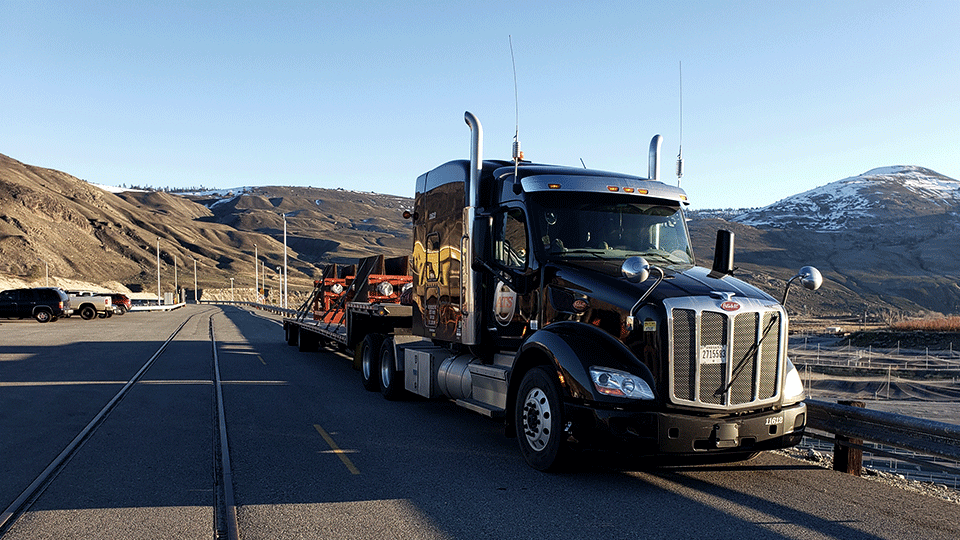
When it comes to the transportation of your freight, predicting your pricing and budgeting properly can be difficult.
Freight rates for legal shipments — loads of sizes that fall within the dimensional confines outlined by each municipality — are complex as it is. Things like the supply of viable transportation options in your area, the amount of lead time a carrier is given and the fuel surcharges you pay, impact the final cost of getting legally-sized shipments moved.
And, unless you’re a transportation expert — with decades of experience moving cargos in various areas at various times of year — it can be hard to wrap your head around these intricacies.
So, when it comes to the movement of oversized goods — freight that’s priced a bit differently than others — it’s understandable if you’re wary of what to expect.
Feeling like you’re in the dark on what you should expect to pay, the factors influencing your pricing and whether the rate you’ve received is competitive is unacceptable.
With so many things on your plate each day, additional challenges and confusion are the last things you need.
Here at Anderson Trucking Service (ATS), we understand how important it is for you to understand the freight rate(s) you’ve been given. This knowledge will allow you to make the most of your transportation spend as you can confidently budget for these expenses going forward.
Although over-dimensional freight is usually more expensive to transport than a legally-sized shipment — due to the heightened complexity of these loads — that doesn’t mean you can get a grasp on their pricing structure or that you need to start from scratch to do so.
In this article, we’ll compare and contrast the cost of moving oversized freight to that of transporting a dimensionally legal shipment. Below you’ll find comprehensive answers to the questions of:
- How are legal and oversized freight rates similar?
- How are legal and oversized freight rates different?
A Special Note About Oversized Vs. Super Loads
Before we begin discussing the ways legal and oversized freight pricing differs — as well as some ways they’re priced the same — it’s important that we define what’s being referred to as “oversized” in this scenario.
Across the board, freight can vary greatly in size. From less-than-truckload volumes, that can amount to nothing more than a single pallet of cargo, to over-dimensional and overweight shipments measuring 16 feet across, 16 feet high and weighing 150,000 pounds or more.
So yeah, to give you the most value possible in this article, it’s important to set some ground rules.
Below, the term “oversized” refers to cargo that measures up to the following dimensions:
- 12 feet, 6 inches high
- 14 feet, 6 inches wide
- 52,000 pounds
Anything above these thresholds edges into the arena of “super load” classification. While super loads are a crucial piece of supply chains around the world, pricing them is a bit more complicated than this article will cover.
For more information on what moving super loads will cost you, on an all-in and per-mile basis, check out our article on What Does Heavy Haul Trucking Cost?
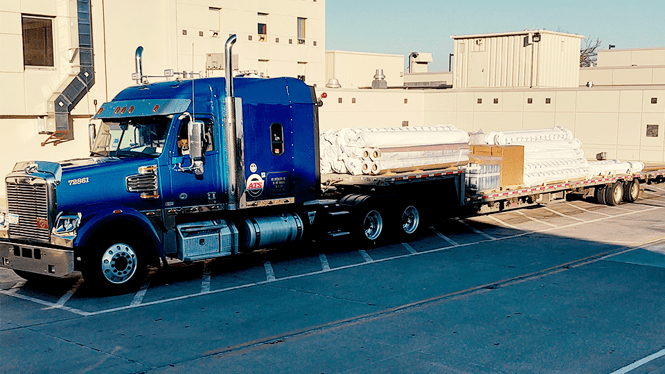
How Are Legal and Oversized Freight Rates Similar?
In many respects, legal and oversized shipments boast similar cost factors.
Both of these shipment types are influenced by supply and demand, the urgency of your timelines and the flexibility you allow your transportation provider — to name a few.
Here’s how:
Supply and Demand:
The interplay between supply and demand in your origin and destination locations will adjust your pricing. The level to which the number of viable options for your freight matches the demand for those same options — this happens regardless of your shipment’s size and will often vary seasonally.
Urgency:
The urgency of your timelines and how expeditiously you need a solution will also affect the price you pay. Same-day shipments, which need to be picked up as soon as possible following request — for example — are some of the more expensive loads.
Without enough notice, many transportation providers struggle to supply cost-effective solutions for their customers — no matter how large, or small they may be. As such, freight with urgent timelines will, in all likelihood, require transportation companies to make an inconvenient adjustment, which in turn affects the rates they supply.
Flexibility:
Rigidity in both timelines and equipment types can be difficult on a shipper’s bottom line in a way that’s disproportionate to most other factors.
In relation to transportation capacity and the rates you pay to secure it, flexibility usually means two things.
1. The flexibility of your pick-up and drop-off times.All truck drives — whether they’re hauling a legal-sized shipment or otherwise — need to adhere to the strict hours of service (HOS) regulations set for them by the Federal Motor Carrier Safety Administration (FMCSA). These rules, limiting each driver’s allotted on-duty service hours to 14 within a 24 hour period, necessitate proper planning from truckers looking to maximize their income.
However, rigid pick-up and drop timeframes make this significantly more difficult.
You see, for a driver to meet the strict requirement of an 8-9 a.m. pick-up appointment, for example, means they need to be empty the night before, which in all likelihood will require them to waste their HOS by sitting around unloaded until your 8 a.m. appointment. This is an inconvenience for truck drivers and impacts the price shippers pay for these loads.
In addition to timeframe flexibility, the flexibility shippers give their providers as to pick-up day of the week often impacts freight pricing. Although timing preferences may vary between providers, short-mile (400 miles or less) weekend freight — that needs to pick up on a Friday and delivered on a Monday — can really affect pricing.
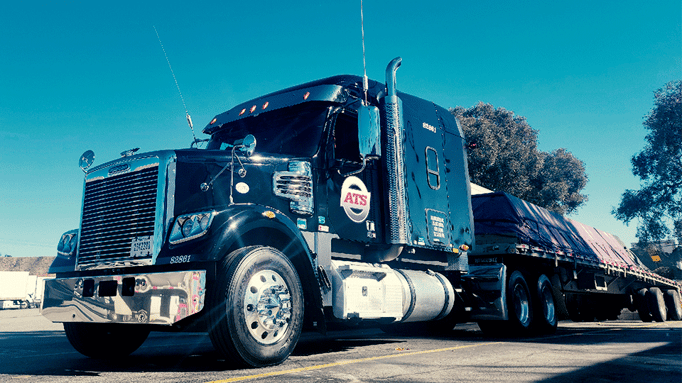
Even though great transportation companies do everything in their power to meet customer needs, no matter how demanding, their resources are still finite. And, in an industry with a pricing structure greatly influenced by supply and demand, the number of credible transportation options available for a shipper to choose from matters greatly.
For this reason, the equipment-type flexibility a shipper allows their transportation provider, directly impacts the cost of getting their cargo moving.
For example, a company that agrees to source for both step-deck and flatbed capacity expands its pool of viable options and drives its cost of procurement down.
Related: 4 Factors That Raise Your Freight Rates (and how to avoid paying more)
4. Origin and/or Destination
Both the start and end locations of your shipment will impact the price you pay to move it, regardless of the size of your cargo. Certain origin and destination locations make it difficult for trucking companies and their drivers to efficiently maximize their allotted service hours. In these cases, price hikes often follow.
Be it due to a lack of resources (trucks, trailers and drivers) near an origin or a thin customer pool to source their next load from at a destination, most trucking companies need to adjust their rates to justify servicing shipments with difficult location requirements.
Though there are a lot of locations that meet these criteria, some of the most difficult — and therefore expensive — freight shipping origin and destinations are:
- Remote locations
- Mountainous regions — particularly in the winter.
- Highly congested (overpopulated) areas.
- Origins with overly high outbound freight demands.
- Destinations without outbound freight demands.
Related: How Does Your Freight’s Origin Impact Your Final Shipping Price?
It should be noted that this is by no means a comprehensive list of transportation industry cost factors. Instead, supply and demand, urgency and flexibility are only a few of the many facets of your final legal and oversized shipping freight rates.
Check out our Pricing Page for an overview of the things that impact price from one service type to another.
How are Legal and Oversized Freight Rates Different?
Now that you understand a few of the ways legal and oversized freight pricing is similar, let’s talk about how quoting oversized loads differs.
While these shipments still battle against the forces of supply and demand and are influenced by many of the same cost factors as legal shipments, over-dimensional freight rates rise to accommodate the added complexity of moving these loads.
The four most influential price factors, that are specific to moving over-dimensional shipments are:
- An over-dimensional surcharge.
- The acquisition of permits.
- Any and all safety-mandated requirements.
- The cost of using a specialized driver.
1. Over-Dimensional (OD) Surcharge
Even for companies that move these goods every day, arranging and overseeing the transportation of over-dimensional goods is both labor and time-intensive.
Planning a route, securing permits, communicating with officials in each jurisdiction and working to ensure the safe transportation of OD products takes a steady-handed transportation provider and highly experienced truck driver.
As a result, securing these services comes at an increased cost to the shippers moving oversized goods. Typically this cost is levied in the form of an over-dimensional or OD surcharge.
For the most part, OD surcharges are tacked onto the rater-per-mile a company is quoted for their load and vary based on the dimensions, complexity and requirements of the shipment in question.
Although your surcharge will change based on your individual situation and needs, you should expect to see between a 10 and 20 percent increase — compared to the pricing of legal loads.
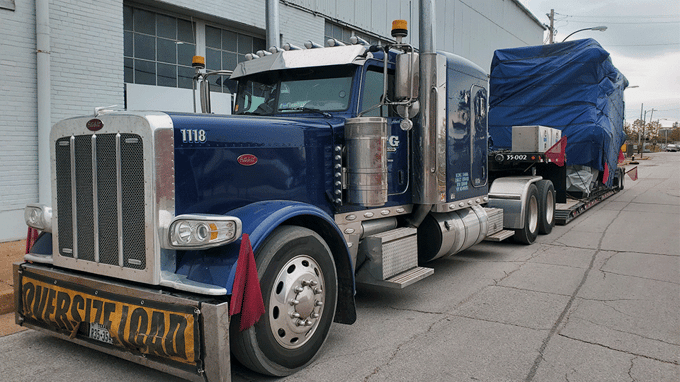 2. The Acquisition of Permits
2. The Acquisition of Permits
Another key element of over-dimensional freight pricing is tied to the acquisition of all necessary permits. Many large loads need to secure permits at state, county and municipal levels.
Although the price and necessity of these permits will change based on your shipment’s route — which makes proper route planning crucial — permitting oversized freight can add up (ranging between $10 and $500+ per permit).
The cost of procuring these permits is billed directly to the company responsible for paying to move an OD shipment — making permit pricing a major driver of over-dimensional freight rates.
3. The Employment of All Necessary Safety Services
In certain scenarios — when the size of a shipment matches thresholds set by the areas it’s traveling through — additional services must be employed in order to legally transport them.
A few examples of the services that are mandated to keep roadways, freight, truck drivers and the motoring public safe from harm, are:
- Pilot cars (roughly $2 per mile)
- Police escort services
- Route/first run surveys
Though many locations mandate these services at differing dimensional thresholds, when deemed legally necessary, utilizing them can’t be avoided and will impact your final shipping prices.
4. The Cost of Using a Specialized Driver
The transportation world is heavily influenced by supply and demand, with supply being the number of viable transportation solutions for your freight (trucks, trailers, drivers) and demand equalling the number of other loads that also need transport.
Moving over-dimensional freight, however, narrows the options (supply) available to shippers. You see, safely and reliably transporting oversized cargo takes a steady-handed, seasoned driver. Relative to the overall supply of truck drivers, this kind of specialization is rare as it takes a long time to attain.
In turn, with a smaller pool of transportation solutions and drivers qualified to move them, OD shipments experience a price hike that’s exclusively theirs.
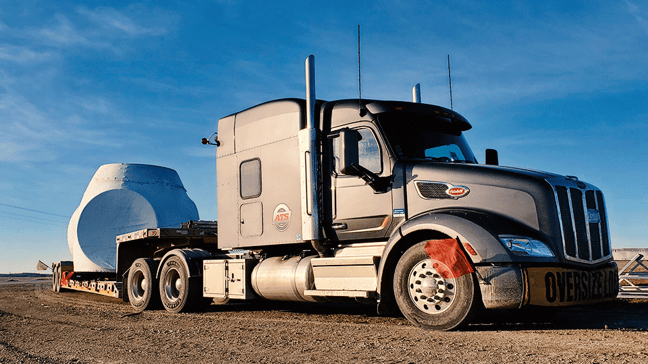
What Else Should You Know About Your Freight Rates?
Now that you understand how over-dimensional transportation costs mirror and differ from legal freight rates in a few major ways, you’re one step closer to mastering your transportation budget.
Making the most of your transportation dollars typically comes down to how well you grasp and adapt to the intricacies of freight pricing.
That said, answers to questions like “what role do accessorials play in my freight rates?”, “what is the difference between a rate-per-mile and a daily rate?” and “what can I do to save money on my shipments without sacrificing service?” are hard to receive in the transportation industry.
Here at ATS, we’re striving to break this mold.
Check out the cost-related content located on our Learning Hub for answers to your most pressing freight shipping price questions. And, if there’s something you don’t see, please don’t hesitate to reach out to us today. We’re always happy to help you understand your freight rates in any way you need.




